The research themes of the Astroparticles, Astrophysics and Cosmology (A2C) department aim to deepen our understanding of the Universe. They cover a wide range of topics: from the origin of the solar system to the origin of chemical elements, from the most violent phenomena in our galaxy and in the extragalactic Universe associated with black holes and stellar explosions, to the nature of dark energy, dark matter and neutrinos, from the study of the primordial Universe, its formation and evolution to the nature of gravitation. This research is carried out in the framework of international collaborations, based on observations made with large instruments and large infrastructures: ground-based astronomical observatories, large underground laboratories, polar bases, stratospheric balloon experiments and space missions.
The research teams of A2C are strongly involved in the detection and understanding of gravitational waves (LIGO, Virgo and the future generation of instruments with the Einstein telescope project), the detection and research of the origin of very high energy cosmic rays (Pierre Auger Observatory), as well as the observation of the sky in X-rays or gamma rays in a range of photon energies from the keV to the GeV (SVOM, eASTROGAM, ComCube) up to several hundreds of TeV (CTA). These researches offer a privileged way to study energetic phenomena in the Universe: stellar explosions, coalescence of compact objects (neutron stars, black holes) in binary systems, ejection of matter from active galactic nuclei, annihilation of antimatter, etc. The teams participate fully in the current development of multi-messenger and multi-wavelength astronomy, notably through the GRANDMA project.
In cosmology, which aims to study the origin, nature, structure and evolution of the Universe, there are two main research themes in the pole. The first theme consists in studying the dark components of the Universe – dark energy and dark matter – through the observation of large structures, thanks to optical surveys (Vera Rubin Observatory), and in radio, at 21 cm (BAORadio). The second theme concerns the understanding of the primordial Universe, its inflation phase and its evolution, through the search for primordial gravitational waves via measurements of the cosmic microwave background at large and small scales (Planck, LiteBIRD, Simons Observatory and preparation to CMB-S4). The teams are, among others, strongly involved in the phenomenological interpretation of these data (reionization, neutrinos, supersymmetric inflation).
Concerning neutrinos and dark matter, studies based on observations of the sky and the Universe are reinforced by activities dedicated to understanding their nature. The bolometric search for double beta decay in the CUPID experiment will provide crucial information on the nature of this particle, by investigating whether the neutrino is the only fermion to be equal to its own antiparticle. It builds on the developments made in the framework of CROSS. The use of bolometers in A2C is also the basis of a future experiment for the detection of coherent neutrino scattering (RICOCHET) and for the direct search for low mass dark matter (EDELWEISS). The A2C teams are also involved in direct dark matter search projects that will probe complementary mass domains using CCDs, innovative particle detectors (DAMIC).
The activities of the pole also include research on the primitive matter of the solar system in order to specify the astrophysical context of the formation of the solar system, and to better understand the origin of the first mineral and organic phases, inherited from the interstellar medium or synthesized in the protoplanetary disk. A collection of micrometeorites collected at Dome C is hosted at the laboratory and the team collaborates to the Hayabusa2 mission for the return of samples from the asteroid Ryugu.
In all these aspects, the activities of the A2C teams cover both R&D and technical contributions to projects (calibration system, cryogenic bolometer and CDD, squeezing techniques on Virgo, digital electronics for the 21cm…), instrument integration and calibration, up to data analysis and scientific interpretation. The cluster also hosts two platforms, MYRTHO and CALVA/Exsqueez. The complementarity of these disciplinary fields allows the IJCLab A2C department to play a major role in understanding the physical phenomena at work in the Universe.
























